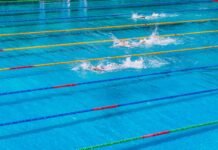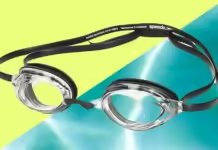“Cramps occur when the muscle contracts involuntarily. This happens especially easily when the central nervous system has significantly increased the tension in the muscles. As is common in swimming, the origin and insertion of the muscles in the soles of the feet and calves are brought closer together due to the overextension of the ankle,” explains internist and sports physician Dr. Matthias Marquardt. Fatigue at the end of a workout further lowers the so-called cramp threshold. Additionally, there is an electrolyte shift due to physical exertion and sweat loss.
The problem: In swimming, you can hardly influence the foot position because it is necessary. “However, a good training condition with good basic endurance and strength increases resilience and thus raises the cramp threshold,” advises the expert. Further stabilizing effects can be achieved with magnesium, which you should initially take permanently at 300 milligrams per day. Additionally, during exertion, drink a carbohydrate- and sodium-rich drink in small sips, enriched with salt. Alternatively, you can also opt for high-quality mineral water. This also stabilizes the membranes and protects against the dreaded cramp.


















